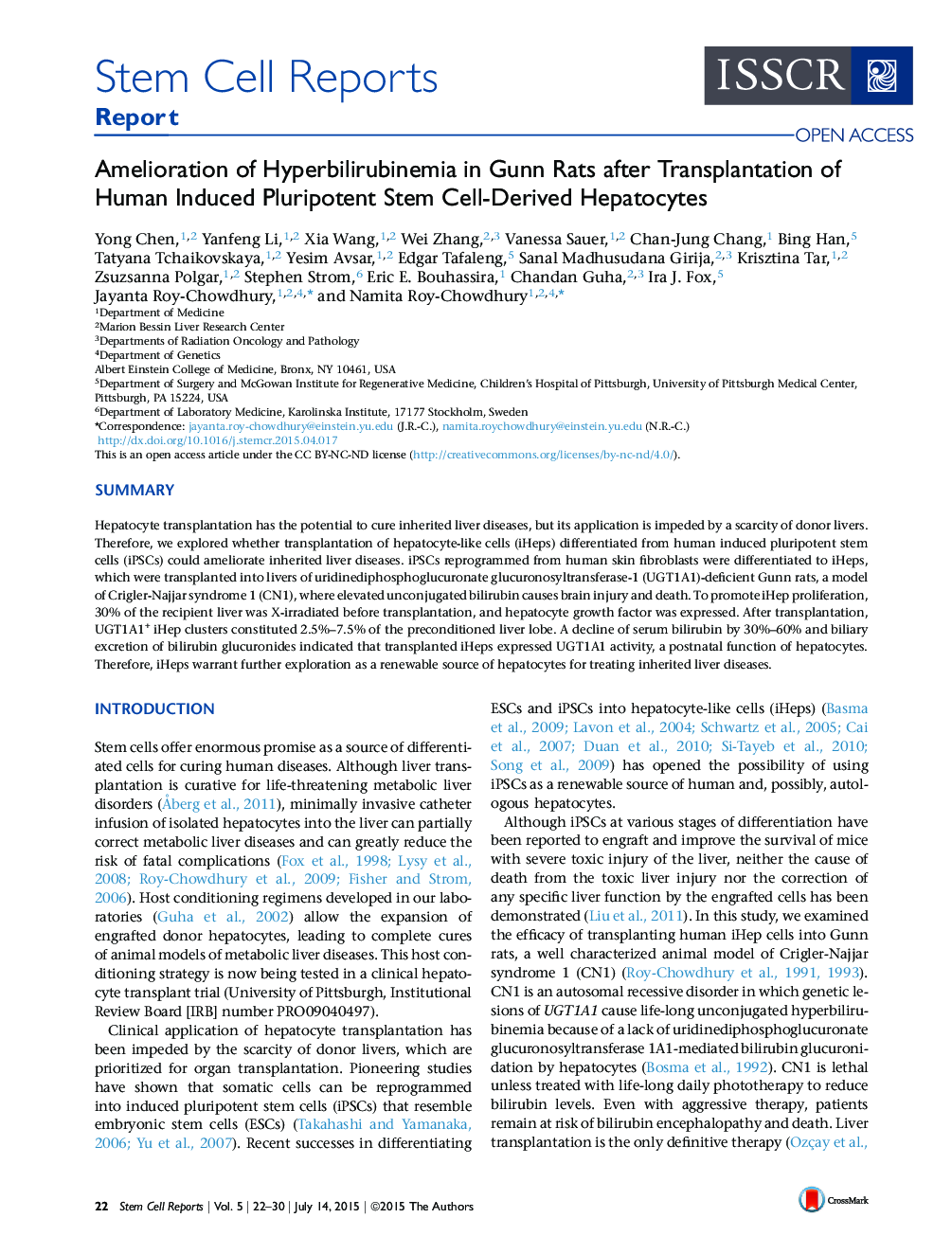| Article ID | Journal | Published Year | Pages | File Type |
|---|---|---|---|---|
| 2093491 | Stem Cell Reports | 2015 | 9 Pages |
•Human skin fibroblast-derived iPSCs were differentiated to hepatocyte-like iHeps•iHeps were transplanted into Gunn rats, a model of Crigler-Najjar syndrome 1•Engraftment of the iHeps in Gunn rat livers reduced serum bilirubin levels•iHeps may be potentially useful in treating liver-based metabolic disorders
SummaryHepatocyte transplantation has the potential to cure inherited liver diseases, but its application is impeded by a scarcity of donor livers. Therefore, we explored whether transplantation of hepatocyte-like cells (iHeps) differentiated from human induced pluripotent stem cells (iPSCs) could ameliorate inherited liver diseases. iPSCs reprogrammed from human skin fibroblasts were differentiated to iHeps, which were transplanted into livers of uridinediphosphoglucuronate glucuronosyltransferase-1 (UGT1A1)-deficient Gunn rats, a model of Crigler-Najjar syndrome 1 (CN1), where elevated unconjugated bilirubin causes brain injury and death. To promote iHep proliferation, 30% of the recipient liver was X-irradiated before transplantation, and hepatocyte growth factor was expressed. After transplantation, UGT1A1+ iHep clusters constituted 2.5%–7.5% of the preconditioned liver lobe. A decline of serum bilirubin by 30%–60% and biliary excretion of bilirubin glucuronides indicated that transplanted iHeps expressed UGT1A1 activity, a postnatal function of hepatocytes. Therefore, iHeps warrant further exploration as a renewable source of hepatocytes for treating inherited liver diseases.
